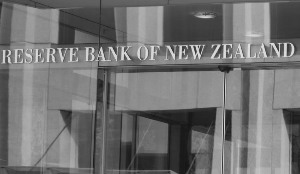
The OCR has been sitting at its historic low of 1.75% since November 2016, but TMM’s regular OCR preview survey reveals a unanimous view that the Reserve Bank will not be altering it this week.
Of the economists who responded to the survey, all bar one – independent economic commentator Michael Reddell – think the OCR has troughed in this cycle.
Further, most think the OCR will stay on hold at 1.75% until next year and that the Reserve Bank is unlikely to change its central, neutral message for some time.
ANZ senior economist Liz Kendall says the Reserve Bank has sent a very clear message that it is determined to meet its inflation target, with a move up or down in interest rates equally likely.
“We expect that cautious message will be retained on Thursday and that the Reserve Bank will maintain its wait-and-see approach, even as inflation rises little by little over the coming year.
“After two false starts this cycle, it will want to be sure that inflation is broad based and likely to be sustained (with headline inflation close to target) before an interest rate increase will be on the table.”
The Reserve Bank will eventually tighten monetary policy in the second half of 2019, once it is confident that inflation is alive and well, she says.
Kiwibank senior economist Jeremy Couchman says that there is simply no need for the Reserve Bank to alter the language it uses in its announcement this week.
“Developments since the May monetary policy statement, such as escalating trade tensions between the US and China, pose a little more downside risk to the Reserve Bank’s view.
“Nevertheless, the Bank’s outlook remains intact. Inflation is expected to slowly lift from here, and require the Reserve Bank to start gradually hiking the OCR next year.”
ASB chief economist Nick Tuffley agrees the risks are slightly more skewed towards lower growth, with interest rates remaining on hold for longer.
Those risks include increasing trade protectionism globally, pessimistic local business confidence and uncertainties from the ongoing Mycoplasma Bovis eradication efforts.
Tuffley says these themes should get some airplay this time, after little mention in May but, that aside, they too see very little need for the Reserve Bank to substantively tweak its outlook for interest rates.
“Inflation shifts are modest, and fresh employment-related data are not up for release until August. We retain our view that the OCR is on hold for a long time, until around August 2019.”
In Westpac chief economist Dominick Stephens’ view, the markets are fixated on whether the Reserve Bank will repeat the words “up or down” in its policy guidance - but that is a red herring.
While the Bank may choose different words to express its on hold stance, this would not necessarily constitute a signal that the OCR outlook has changed, he says.
“The Bank is keen to avoid formulaic communications, and might chop and change its wording even if its intentions have not changed.
“Beneath the policy guidance paragraph, the details of the announcement might be slightly more hawkish than the May statement.”
Despite expecting no change, survey respondents did speculate on which issues and risks the Reserve Bank might address in its announcement.
Bancorp Treasury Services Ltd senior economist Peter Cavanaugh says he will be looking for any comments on the inflationary effect of recent petrol price rises, on subdued global inflation and threats to global growth and inflation from US centred trade tiffs.
Reddell says there may be some reference to public sector wage pressures and potential implications for general inflation – although he thinks the Bank isn't paying enough attention to inflation expectations lingering well below 2%.
But TD Securities head of Asia-Pacific research Annette Beacher says she is not expecting any changes for quite some time.
“It will be interesting if the cash rate path changes with the August MPS. Overall, it should be rather dull from here on in, except for seeing what cartoons the Reserve Bank uses to be more ‘public friendly’.”




Comments
No comments yet.
Sign In to add your comment